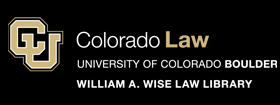Document Type
Article
Publication
Washington University Law Quarterly
Year
2005
Citation Information
Frederic M. Bloom, Unconstitutional Courses, 83 Wash. U. L.Q. 1679 (2005), available at https://scholar.law.colorado.edu/faculty-articles/776.
Abstract
By now, we almost expect Congress to fail. Nearly every time the federal courts announce a controversial decision, Congress issues a call to rein in "runaway" federal judges. And nearly every time Congress makes a "jurisdiction-stripping" threat, it comes to nothing.
But if Congress's threats possess little fire, we have still been distracted by their smoke. This Article argues that Congress's noisy calls have obscured another potent threat to the "judicial Power": the Supreme Court itself. On occasion, this Article asserts, the Court reshapes and abuses the "judicial Power"--not through bold pronouncements or obvious doctrinal revisions, but through something more inconspicuous, more discreet: the prescription of unconstitutional decisionmaking procedures. These decisionmaking procedures--what this Article calls "unconstitutional courses"--have attracted little sustained attention; their unexpected source and their subtle form make these "courses" too easy to ignore. Yet where Congress has so often failed, the Court has quietly succeeded. By charting "unconstitutional courses," the Court has refashioned the "judicial Power" in an untenable way.
To show how, this Article examines what "unconstitutional courses" are, when the Court has charted them, and why these "courses" merit consideration. As a part of this analysis, this Article identifies two "unconstitutional courses," one historic and one contemporary. The first "course" grows out of Swift v. Tyson, a well-known (if long-derided) discussion of federal common law; the second emerges in Williams v. Taylor, a significant chapter in the story of contemporary habeas law. Both Swift and Williams illustrate the importance of how courts make decisions-what law they consider, what facts they ignore, what analytical steps they take. Both Swift and Williams demonstrate the impact a court's decisionmaking "course" may (and does) have in resolving individual disputes and in shaping the "judicial Power." And both Swift and Williams exhibit the need to examine the Court's less obvious threats to individual rights--and to itself.
Copyright Statement
Copyright protected. Use of materials from this collection beyond the exceptions provided for in the Fair Use and Educational Use clauses of the U.S. Copyright Law may violate federal law. Permission to publish or reproduce is required.
Included in
Civil Procedure Commons, Constitutional Law Commons, Courts Commons, Fourth Amendment Commons, Jurisdiction Commons, Legislation Commons, Litigation Commons, Supreme Court of the United States Commons


